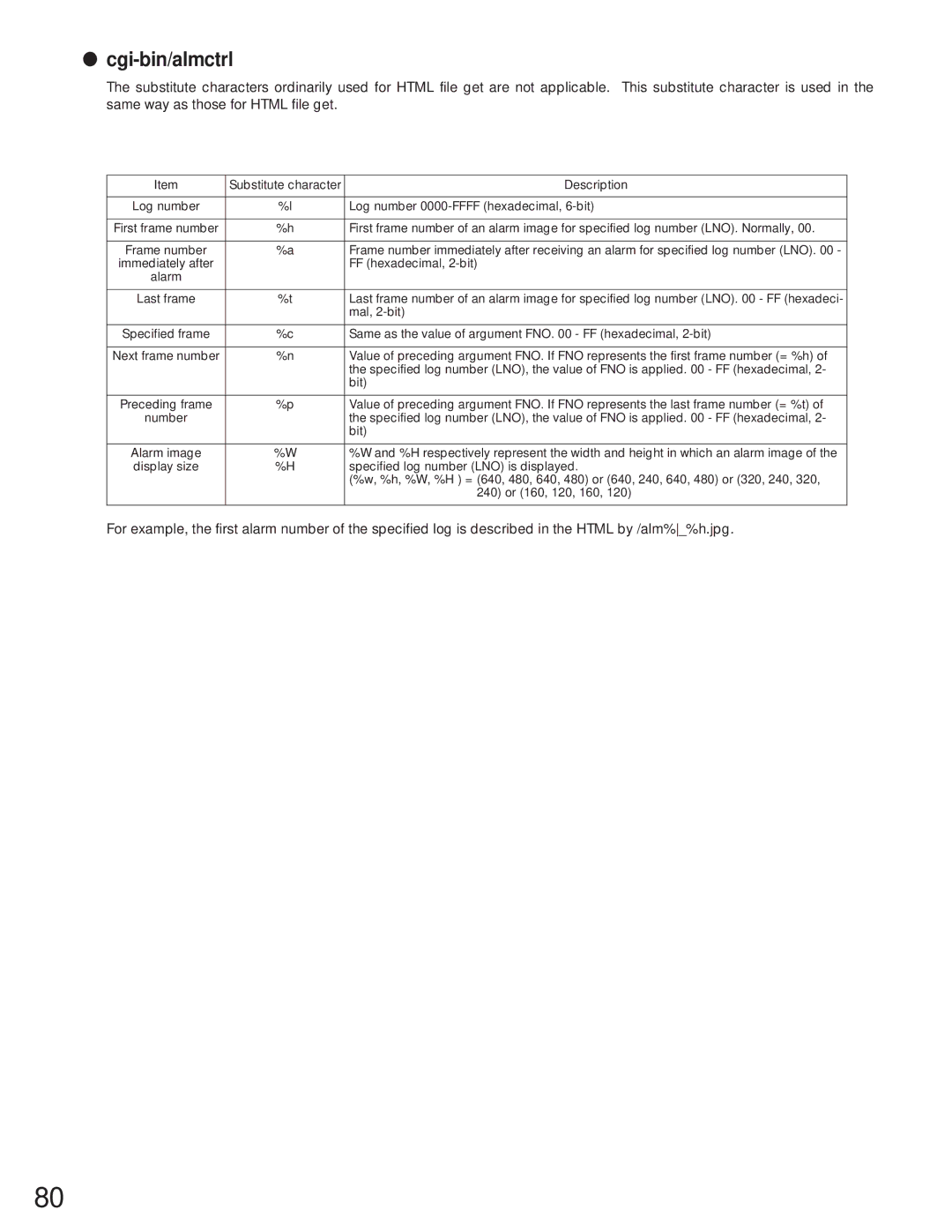●cgi-bin/almctrl
The substitute characters ordinarily used for HTML file get are not applicable. This substitute character is used in the same way as those for HTML file get.
Item | Substitute character | Description |
|
|
|
Log number | %l | Log number |
|
|
|
First frame number | %h | First frame number of an alarm image for specified log number (LNO). Normally, 00. |
|
|
|
Frame number | %a | Frame number immediately after receiving an alarm for specified log number (LNO). 00 - |
immediately after |
| FF (hexadecimal, |
alarm |
|
|
|
|
|
Last frame | %t | Last frame number of an alarm image for specified log number (LNO). 00 - FF (hexadeci- |
|
| mal, |
|
|
|
Specified frame | %c | Same as the value of argument FNO. 00 - FF (hexadecimal, |
|
|
|
Next frame number | %n | Value of preceding argument FNO. If FNO represents the first frame number (= %h) of |
|
| the specified log number (LNO), the value of FNO is applied. 00 - FF (hexadecimal, 2- |
|
| bit) |
|
|
|
Preceding frame | %p | Value of preceding argument FNO. If FNO represents the last frame number (= %t) of |
number |
| the specified log number (LNO), the value of FNO is applied. 00 - FF (hexadecimal, 2- |
|
| bit) |
|
|
|
Alarm image | %W | %W and %H respectively represent the width and height in which an alarm image of the |
display size | %H | specified log number (LNO) is displayed. |
|
| (%w, %h, %W, %H ) = (640, 480, 640, 480) or (640, 240, 640, 480) or (320, 240, 320, |
|
| 240) or (160, 120, 160, 120) |
|
|
|
For example, the first alarm number of the specified log is described in the HTML by /alm%_%h.jpg.
80
